Text
HINDI + MALAYALAM + TAMIL RESOURCES (GOOGLE DOC FOLDERS)
Hi guys!

As a Hindustani, Malayalee and Tamil girl, Hindi, Malayalam and Tamil are my native tongues. Even though, English is my first language, being fluent in writing, reading and speaking these languages is important to me. I do not want to have my mother tongues die. I want to pass on the beauty of these languages to my children and have them teach it to their own kids.
I have found these PDFs online (credit goes to them) and compiled them in Google Doc folders.
Disclaimer: I own none of this content.
Good luck!
Hindi Resources:
Learning Hindi - https://drive.google.com/drive/folders/0B9QanVFHM0vGX0x4ZjB2Z0xJalk?usp=sharing
(This folder is not mine and was created by http://www.learning-hindi.com/ // Contact them at [email protected] // Read me! https://docs.google.com/document/d/1_bSLz75Iwr4bgR6PUrP_rw2MoHYeWA5dxoFdDTOJZqA/edit
Learning Hindi 2 - https://drive.google.com/drive/folders/0ByWUCmmbtYqxMTdMOFlTLXdFT2s?usp=sharing
(Resources I compiled on my own)

Malayalam Resources:
Learning Malayalam
- https://drive.google.com/drive/folders/0ByWUCmmbtYqxVExkLXd3eTdoRlE?usp=sharing
(Resources I complied on my own)

Tamil Resources:
Learning Tamil
- https://drive.google.com/drive/folders/0ByWUCmmbtYqxTnJfS2tlYldfa3M?usp=sharing
(Resources I compiled on my own)

#y'know one would have thought i had reblogged this or checked it out before but i don't think i ever did#despite having definitely seen it on currylangs#going to finally look into this thanks for making it#malayalam#resources
307 notes
·
View notes
Photo

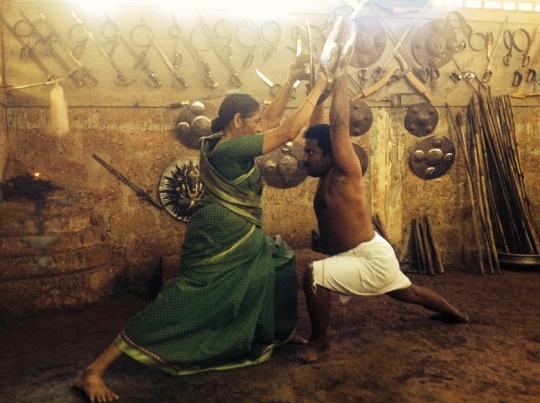
Defying age with a sword: Meenakshi Gurrukkal, Kerala’s grand old Kalaripayattu dame
“Meenakshi Gurukkal crouched low, sword poised; her eyes unblinking as she faced her opponent in the mud-paved ‘kalari’ or arena. From the tree tops, a mynah’s call resonated in the silence. In a flash she moved to attack, twirling her sword; metal clashing loudly as it made contact with a shield.
At 74, she is possibly the oldest woman exponent of Kalaripayattu, the ancient martial arts from Kerala. She has been practising Kalaripayattu for no less than sixty-eight years - training and teaching.

Around 150 students learn Kalaripayattu in her school Kadathanadan Kalari Sangam, in a tiny hamlet in Vadakara, near Calicut, Kerala. From June to September every year, classes are held thrice a day teaching the Northern style of Kalaripayattu, including “uzhichil” or massages for aches and pains. Techniques have been passed down through generations, written in a palm ‘booklet’, grey and delicate with age. When school term is over, Meenakshi takes part in performances. “Nowadays, apart from teaching, I practise only when I have a show,” she says nonchalantly. This, from someone who on an average performs in 60 shows a year…”
Keep reading at thenewsminute
[ Follow SuperheroesInColor on facebook / instagram / twitter / tumblr ]
15K notes
·
View notes
Photo

Vadakkunnathan Temple, Thrissur, Kerala, India
Vadakkunnathan Temple is an ancient Hindu temple dedicated to Shiva at city of Thrissur of Keral. This temple is a classic example of the architectural style of Kerala and has monumental towers on all four sides and also a kuttambalam. wikipedia
(via Instagram: Mayur DC)
39 notes
·
View notes
Photo
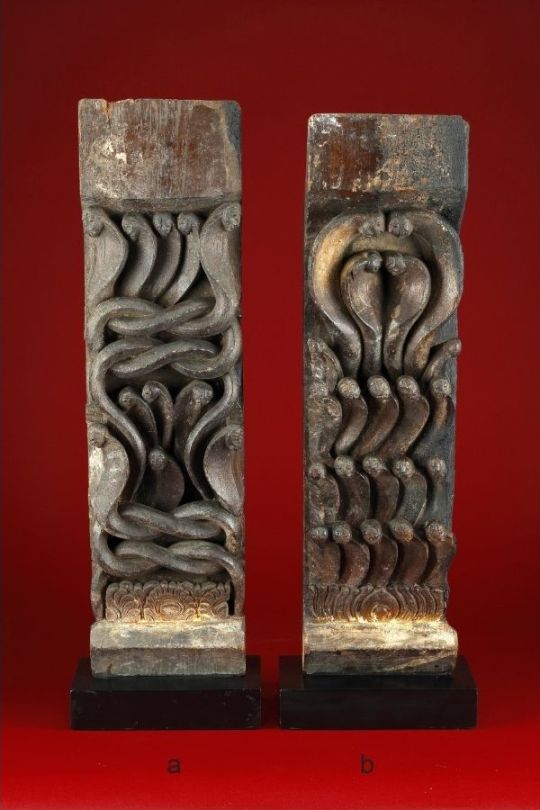

Panels Depicting Nagadevata
Circa 20th Century. Kerala/Tamil Nadu.
a) Wood 19.5 in (49.6 cm) high
b) Wood 19.5 in (49.5 cm) high (Set of two)
Snakes or nagas have always been depicted in Hindu art and architecture as potent symbols. The hooded cobra is seen as a protector and guardian, and the snake is associated with Shiva and Vishnu in iconographic representation.
Capitals of columns, awnings and doorways to homes and temples were sometimes carved with images of snakes to serve as symbols of protection. The present lot has carvings of hooded snakes who seem imbued with an essential energy stemming from the artist’s carving skills.
(via Saffronart.com)
35 notes
·
View notes
Photo


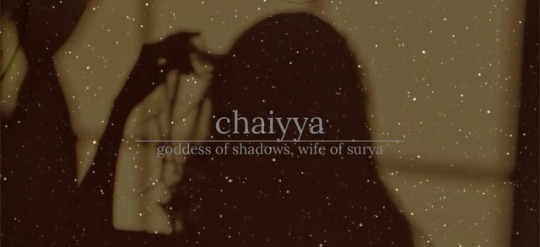
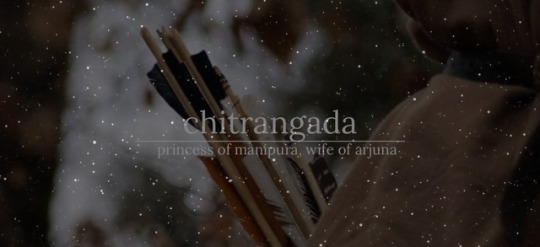



hinduism + ladies –> br - devah
270 notes
·
View notes
Photo








Synagogues of India (Calcutta/Kolkata, Mumbai, and Cochin). Photographs by Jono David.
Jews were once a prominent component of India’s population. The three main branches of Indian Jewry are the Maharashtrian (Bene Israel) Jews, Cochin Jews, and Baghdadi Jews. Bene Israel, who constitute the majority of Indian Jews, claim to be descendants of seven Jewish families from Judea who were shipwrecked near the village of Navgaon in western India around 175 B.C. They settled primarily in Mumbai, Calcutta, Old Delhi, and Ahmedabad.
Cochin Jews, according to local tradition, are descendants of Jewish merchants who arrived on the Malabar coast of India with the ships of King Solomon’s fleet. After the Spanish Edict of Expulsion, Jewish refugees migrated to Cochin from Aleppo, Constantinople, and Palestine. Within the same timeframe, Jews escaping forced conversions in Persia and persecution in Baghdad also fled to Cochin.
The waves of Jewish emigration from Baghdad started gaining momentum in the 19th century. Via intricate mercantile routes, communities of Baghdadi Jewish traders reached Calcutta, a port city in eastern India and the former nerve center of the British Empire. Although there was no shortage of rifts and conflicts between Baghdadi Jews and the local Bene Israel of Calcutta, the two groups merged their cultures together and gave rise to new sociocultural forms.
India gained its independence of Britain in 1947, and nationalism and emphasis on the Partition of Hindu and Muslim identities intensified. The following year, the state of Israel was established, and Indian Jews relocated to Katamon in Jerusalem, Beersheba, Ramla, Dimona, and Yeruham in dramatic numbers. In the 1940s, over 30,000 Jews were registered in India; in 1971, there were roughtly 5,825. 70,000 Indian Jews live in Israel today (the great majority of them Bene Israel).
#places#kerala#culture#the one in cochin is really pretty#i want to learn more about malayali jews tho
1K notes
·
View notes
Text
കൈയിൽ
ഉടുപ്പയിൽ
പുസ്തകത്തിൽ
കട്ടിലയിൽ
വെള്ളത്തിൽ
And a bonus sentence, just for fun:
ഞാൻ എന്രെ വീടുയിൽ ഉണ്ട്.
Malayalam Lesson 11: The Locative Case
Previous Lesson
The locative case is used to indicate spatial and temporal meanings, so in it’s simplest form it can be compared to the prepositions “in”, “at”, and “on” and at a higher level it is used to express feelings, behaviours and ideologies. So as a beginner it will be difficult to grasp the full potential of this case because there are many aspects in a sentence to consider before interpreting it. For now, we’ll stick to understanding how to use this case in its simplest forms.
In order to turn nouns and pronouns into the locative form, we add ഇൽ. And just like the other suffixes, if the word ends with a consonant that’s not free (Chilaksharam are not really consonants and having a chandrakala doesn’t count as being not free. Review of lesson here) then there are two options:
Either use the യ buffer, യിൽ but there are also words that have a free consonant that cannot take ഇ symbol because of the inherent vowel in a consonant for example മേശ (table), to say “on” the table you would say മേശയിൽ.
Or use ത്തിൽ, this is for the words that end with ആം, for example, പാഠം (lesson) becomes പാഠത്തിൽ so in a sentence that would be ഇ പാഠത്തിൽ നമ്മൾ പഠിക്കാൻ പോകുന്നത്… In this lesson we are going to learn…
There is also അത് form, but it is not used as commonly because there aren’t many words who can take that case form.
Example: മുറ്റത്ത് നിൽക്കുന്ന മുല്ല the jasmine in the garden/yard
(lit trans: the jasmine standing in the yard)
ദേശം country എന്റെ ദേശത്തിൽ In my country or എന്റെ ദേശത്ത് At my country
The locative form is also used to expresses deeper thoughts or feelings when paired with pronouns so when you these pronouns you either sound poetic or dramatic:
എന്നിൽ
നിങ്ങളിൽ (means among/amongst you, this is strictly plural form)
നിന്നിൽ
Not as common, just because there aren’t many scenarios where you would use this version of the pronoun.
ഇവളിൽ
ഇവനിൽ
അവളിൽ
അവനിൽ
Here are some examples of how you would use this case
ആ കസേരയിൽ ഇരിക്കുന്നത് ആരാണ്? Who is sitting on that chair?
വീട്ടിൽ പോയിട്ട് ഞാൻ ഉറങ്ങാന് പോവുകയാണ് I’m going to sleep when I get home. You can also literally translate this sentence as after going home I will sleep.
സ്വപ്നത്തിൽ ഞാൻ പറന്നു I flew in my dream
(drama example) എന്നിൽ അരിശമുണ്ട്! I have anger in me!
Here are some nouns for you to turn into locative forms
കൈ
ഉടുപ്പ് cloth
പുസ്തകം
കട്ടിൽ bed (this is challenging but think about what consonant can replace ൽ and still have similar sound)
വെള്ളം
Next Lesson
5 notes
·
View notes
Photo

Bed of flowers - Thrissur Pooram
Thiruvambadi Sri Krishna Temple, Thrissur, Kerala, India.
A thick layer of flowers is seen on the road outside the Thiruvambady temple complex. This was shot at the end of “Purappadu” ceremony.
(via Flickr: Rajesh Vijayarajan)
133 notes
·
View notes
Text
നടക്കുന്നു
പാടുന്നു
വായിക്കുന്നു
കഴിക്കുന്നു
ചെയ്യുന്നു
ഉറങ്ങുന്നു
ഞാൻ നടക്കുന്നു
അവൾ നടക്കുന്നു
നീ വായിക്കുന്നു
ഞങ്ങൾ കഴിക്കുകയാണ്
അവൻ ചെയ്യുകയാണ്
കുട്ടി ഉറങ്ങുകയാണ്
എന്രെ
നിന്രെ
ഞങ്ങളുടെ
അവരുടെ
Also here’s a hot mess of a paragraph:
ഞാൻ സർവകലാശാലക്ക് പോയി. ഞാൻ തിന്നു. എന്രെ കൂടുകാർക്ക് ഞാൻ സംസാരിച്ചു. ഇപോൾ ഞാൻ എഴുതുന്നു. എന്രെ സുഹൃത്ത് ഇവിടെ ഉണ്ട്. അവൻ വായിക്കുന്നു.
Corrections welcome!! ^^
Malayalam Activity 2
We’re working on an important grammar post for next week, so meanwhile, here’s another (shorter) activity to refine your skills!
Turn these verbs into the simple present tense form:
നടക്കുക (to walk)
പാടുക (to sing)
വായിക്കുക (to read)
കഴിക്കുക (to eat)
ചെയ്യുക (to do)
ഉറങ്ങുക (to sleep)
Use present tense form to translate the following
I walk
She walks
You read
Use the present continuous tense form to translate the following
We are eating
He is doing
The child is sleeping
Fill in the blanks with the correct possessive pronouns
ഇത് _____ വീട് ആണ് (this is my house)
അവൻ ____ ചേട്ടൻ ആണ് (he is your brother)
_____ സ്കൂൾ പുതിയത് ആണ് (our school is new)
ഇത് _____ വണ്ടി ആണ് (this is their car)
And finally, try writing a paragraph using the grammar we’ve learnt so far.
You can submit it if you want to, and refer to our vocab lists and grammar. It doesn’t have to be complex or have difficult words, but try and use a variety of sentence structures. If you need a prompt or any help, don’t hesitate to ask us!
That’s all for this week, good luck!
#these are uncorrected#i don't think any of them are super dubious though#the paragraph is bad though#marisa does malayalam#malayalam#resources
7 notes
·
View notes
Text
Malayalam lesson 10 - Numbers (അക്കങ്ങള്)
Previous Lesson
We thought we’d take a break from the activities and bring you numbers for this week!
Malayalam numbers are very similar to the ones in other Dravidian languages especially Tamil, there is a pattern to how these numbers are said/written it is multiplication! It may seem difficult at the beginning, but once you memorise the first 10 then it becomes easier in figuring out the rest. These are the first 10 cardinal numbers:
ഒന്ന് (onnu) - 1
രണ്ട് (randu) - 2
മൂന്ന് (muunnu) - 3
നാല് (naalu) - 4
അഞ്ച് (añchu) - 5
ആറ്(aaru) - 6
ഏഴ് (eezhu) - 7
എട്ട് (ettu) - 8
ഒൻപത് (onpattu) - 9
പത്ത് (patthu) - 10
Did you notice something towards the end? The number 9 is a combination of ഒന്ന് and പത്ത് (like Roman numerals!). This doesn’t continue with the rest of the numbers but it’s just something interesting we thought you should know and because nine is weird throughout ;p
Now in groups of ten, the cardinal numbers are:
ഇരുപത് (irupathu) - 20
മുപ്പത് (muppathu) - 30
നാല്പത് (naalpathu) - 40
അന്പത് (anpathu) - 50
അറുപത് (arupathu) - 60
എഴുപത് (ezhupathu) - 70
എണ്പത് (ennpathu) - 80
തൊണ്ണൂറ് (thonnuuru) - 90
നൂറ് (nuru) - 100
Like mentioned before the pattern for numbers after ten is based on multiplication, literally we are saying three tens or five tens. Now, what about the numbers in between?
You just combine them like 10+1 for 11 or 20+4 for 24, so there is a little addition too :)
പതിനൊന്ന് pathinonnu
പന്ത്രണ്ട് panthrandu
പതിമൂന്ന് pathimuunnu
പതിനാല് pathinaalu
പതിനഞ്ച് pathinañchu
പതിനാര് pathinaaru
പതിനേഴ് pathineezhu
പതിനെട്ട് pathinettu
പത്തൊന്പത് patthonpathu
Nines are tough and easy to get mixed up, so don’t be too hard on yourselves.
After memorising these numbers, the others shouldn’t be too difficult. We’ll introduce them to you in a future lesson!
Practice these and make sure you can pronounce them (don’t try following the transliteration too much, you might be saying things wrong), but if you forget the spellings you can always use Arabic numerals like English (even though there is a native set of numerals)!
Next Lesson
#i didn't do anything with these#but to be fair numbers are one of the few things i have down in malayalam#and that my dad actually vaguely taught to me as a child#marisa does malayalam#malayalam#resources
18 notes
·
View notes
Text
ഞാൻ
അവൾ
ഇവർ
നമ്മൾ
നീ
അവർ
അവൾ
അവരുടെ
ഇവനെ (I didn’t realize these were only nominative case aaaaaa)
ഞങ്ങൾ
നമ്മൾ
ഞങ്ങൾക്ക് (should be അവർ, I’m just stupid)
എന്രെ പേര് … ആണ്. (Can you say this?)
???? (I saw the note about it though)
ഇത് എന്രെ അമ്മ ആണ്.
വെള്ളം ഉണ്ട്.
ഉണ്ട്
ആണ്
ഉണ്ട്
ഉണ്ട്
ആണ്
ആണ്
Malayalam Grammar Activity 1: Pronouns and State of Beings
Using the right Pronouns! These are sentences in english, but choose the best Malayalam pronouns you would replace the bolded words with: Review of pronouns
I am studying
He is not here (far away from you)
They don’t like bitter gourd (close to you)
We are all going out to eat
You are wrong
They (far from you) are against us
Next imagine a debate going on between two teams, fill in the blanks with the right pronouns based on the tone and meaning of sentences. Translation is provided as well. This is a little challenging but we believe in you guys!
(about girl from opposing team) ______ എന്താണ് പറയുന്നത്? What is she saying is?
(about opposing team) അത് ________ അഭിപ്രായമാണ് That is their opinion!
(team defending their own guy) _______ പറയുന്നത് കേൾക്ക്! Listen to him!
_________ നിങ്ങൾ ഓട് യോജിക്കുന്നില്ല We don’t agree with you (you guys)
_________ ഇത് ഇപ്പോൾ ചർച്ചചെയ്യണം! We need to discuss this now! (as in between the two teams, trying to be inclusive)
________ നിങ്ങൾ ഓട് പറഞ്ഞത് ശരിയായിരുന്നില്ല What they said to us wasn’t right.
State of Being using ആണ് and ഉണ്ട്
For a refresher ആണ് means “is” this is mostly used to make descriptive statements and facts, such “my name is” or “This is yellow”
ഉണ്ട് is the equivalent of “have” but it’s also a state of being mostly used with emotions, things, and other intangible concepts. So statements such as “I have an apple” or “there is water in the bucket” or “I am getting angry” in malayalam you “have anger” vs in english you “are angry”
If things aren’t clear feel free to ask us questions.
Translate sentence using ആണ് and ഉണ്ട്
My name is _____
She is from Kerala
This is my mother
There is water
Fill in the blanks with the right state of being
അവിടെ ഒരു ചക്ക ____
ഞാൻ മലയാളീ _____
എന്റെ വീട്ടിൽ തെങ് _____
ഇവിടെ ഫോൺ _____
അവൾ ചിറകുക ______
കേരളം പച്ചപ്പുള്ള നാട് ______
#these are the answers i wrote before looking at corrections#so forgive the fact that they're a mess#i didn't want to just put the answers that wouldn't serve for much#marisa does malayalam#malayalam#resources
32 notes
·
View notes
Text
Translations, corrections welcome ^-^
ഞാൻ ആപ്പിൾ തിന്നു.
എന്രെ സുഹൃത്ത് ഓടി.
നിന്രെ ചേച്ചി പുസ്തകം കൊടുത്തു.
അവൾ പാടുകയായിരുന്നു.
എന്രെ അമ്മ നടക്കുകയായിരുന്നു.
അവർ സംസാരിക്കുകയായിരുന്നു.
Malayalam Lesson 9 - Past tense
Previous Lesson
It feels like a long time since we covered critical grammar point, so today we are going to learn how to talk and write in past tense. The sentence structure is very much similar to present tense, so reviewing it helps a lot. There are two main ways to express past tense simple past and past continuous.
The first thing we’ll cover is Simple Past tense, which is using conjugated verbs in a sentence, so learning how to conjugate verbs into past tense is important. There isn’t a pattern necessarily but rest assured there are only two main ending: ഇ and ഉ (the symbols of course because vowels cannot be used in the middle or at the end), the rest depends upon the flow the original word and what consonant it ends with.
Here are some common verbs, you’ll recognize them from previous lessons. How do you know which ending to use? For now, you’ll have to memorize it but soon you’ll be able to tell if something just “sounds right”
പോവുക (to go) - പോയി (went, gone, left)
പാടുക (to sing) - പാടി (sang)
ഓടുക (to run) - ഓടി (ran)
എഴുതുക (write) - എഴുതി (wrote)
വാങ്ങുക (buy) - വാങ്ങി (bought)
കിട്ടുക (get/receive)- കിട്ടി (got/received)
കിടക്കും (lie) - കിടന്നു (laid, lay)
ഇരിക്കുക (sit) - ഇരുന്നു (sat)
വരുക (come) - വന്നു (came)
നടക്കുക (walk) - നടന്നു (walked)
പറയുക (say) - പറഞ്ഞു (said)
കുടിക്കുക (drink) - കുടിച്ചു (drank, drunk)
സംസാരിക്കുക (speak/talk) - സംസാരിച്ചു (spoke/talked)
ചെയ്യുക (do) - ചെയതു (done)
കേൾക്കുക (listen) - കേട്ടു (listened)
കൊടുക്കുക (give) - കൊടുത്തു (gave)
Next is the equivalent of Past Continuous in English. The word to use and add to the verbs is ആയിരുന്നു (was), the past tense of ആണ് (is) (lesson 2 & lesson 3).
In this case the verbs are left in their infinitive form and ആയിരുന്നു is added to it, you can write them separately especially as a beginner but the common way to write it is to combine both
Infinitive + ആയിരുന്നു
പോവുക + ആയിരുന്നു = പോവുകയായിരുന്നു (combo form)
As mentioned before യ is like a glue and it helps smooth everything out in writing and speaking.
ഞാൻ നടക്കുകയായിരുന്നു - I was walking
അവർ വരുകയായിരുന്നു - They were coming
Try translating these:
Simple Past
I ate an apple.
My friend ran.
Your sister gave the book.
Past Continuous
He was singing
My mother was walking
They were talking
PSA
From next week onward we’ll begin an exercise or activity series, in which we’ll review all the grammar points learned so far. Please look forward to it!
Next Lesson
#i put tinnu because i couldn't find the past tense for karikkuka#forgive my awful romanization#but yeah if anyone knows what the past tense for it is please tell me!!#marisa does malayalam#malayalam#resources
14 notes
·
View notes
Text
Practice food sentences:
ഞാൻ പയര് കഴിക്കുന്നു.
അച്ഛൻ മത്തികൾ കഴികുന്നു.
അമ്മ കമ്പിളിനാരങ്ങ കഴിക്കുന്നു.
Malayalam Vocabulary List 3
Food: Fruits, Vegetables, and Meats (can’t be a Malayalee and not love our beef)
Sticking with last week’s theme of food, we’ll be covering the most common and popular fruits, vegetables, and meats of Kerala. Some of these you’ll be hearing for the first time and probably never seen them either but we urge you to try them when you get a chance, they’re all delicious!
Fruit/Fruits: പഴം or പഴങ്ങൾ payam or payangal
Banana - വാഴപ്പഴം or പഴം, because banana is such a staple in Kerala and there are like 50 different kinds of them we generally refer to banana as പഴം vayapayam
Plantain ഏത്തപ്പഴം or ഏത്തക്ക or നേന്ത്രപ്പഴം (it varies depending on what region you’re from) yettapayam or yetthakka or nenthrapayam
Jackfruit (important fruit, state fruit) - ചക്ക chakka
Mango - മാങ്ങ manga (what would the world do without kerala?)
Guava - പേരയ്ക്ക perakka
Jambu or Bell Fruit ചാമ്പങ്ങ chambanga
Gooseberry - നെല്ലിക്ക nelikka
Dates ഈന്തപ്പഴം intha payanam
Pineapple കൈതച്ചക്ക kaithachakka
Melon മത്തങ്ങ mathanga
Papaya ഓമക്കാ omakka
Watermelon തണ്ണിമത്തന് (tamil origin thus തണ്ണി and not വെള്ളം) thanimathan
Grapefruit കമ്പിളിനാരങ്ങ (lit trans: blanket citrus/lemon) kambllinarnga
Lemon നാരങ്ങ narnga
Grapes മുന്തിരി munthari
Pomegranate: മാതളനാരങ്ങ mathallanarnga
Coconut: തേങ്ങ thenga
We feel uncomfortable categorizing this lol cause it’s another one of those staples and is used in everything we make! Kerala is called the “land of coconuts” for a reason, also Kerala or as we Malayalees refer to it as Keralam കേരളം literally means that, because another word for coconut/coconut tree is കേരം
Vegetables - പച്ചക്കറി or പച്ചക്കറികൾ (lit trans greens, both are plural) pachakari/pachakarikal
Tapioca - കപ്പ kappa
Yam - ചെന്ന chena
Taro - ചേമ്പ് chembu
Ladies fingers lol or for the Americas Okra - വെണ്ടക്ക vendakka
Eggplant - വഴുതനങ്ങ vazhuthananga
Bitter Gourd - പാവയ്ക്കാ pavakka (yes extremely bitter)
Ivy Gourd - കോവക്ക kovakka
Drumstick - മുരിങ്ങക്ക muringakka
Spinach - ചീര cheera
Tomato - തക്കാളി thakali (we do know it’s a fruit and we do call it തക്കാളിപഴം)
Potatoes - ഉരുളക്കിഴങ് uralakizhangu
Kerala cuisine basic ingredients:
onion - ഉള്ളി ulli
Ginger - ഇഞ്ചി inji
Garlic - വെളുത്തുള്ളി (lit trans white onion) veluthulli
Chilli - മുളക് mulaku (there are many different types as well)
Beans - പയര് payar, a general term for legumes, so below are all the types of beans (We refer to green beans as beans to lessen the confusion since it’s also a popular veggie)
Mung beans ചെറുപയര് (lit trans: small beans) cherupayar
Chickpeas - കടല kadala (there are two types so watch out)
Brown peas വന്പയര് vanpayar
Red beans പെരുമ്പയര് perumpayar
Non-Veg
Beef - (state’s favourite meat, enough to cause riots and controversy lol) we use the term ഇറച്ചി erachi (lit trans: flesh) and beef equally
Goat - ആട് aadu (also the title of a funny movie)
Mutton - lamb or sheep (we refer to it as mutton because sheep and goat is the same family species so it’s all ആട് )
Chicken - കോഴ kozhi
Fish (general) - മീന് meen Since we are a coastal state we don’t joke about our fishes either but there is too many so we’ll cover the basics
Mackerel ഐല aila
Sardine മത്തി or ചാള mathi or chaalla
Seer Fish നെയ്മീന് (lit trans fatty/oily fish) neimeen
Green Chromide കരിമീന് karimeen
Shrimp ചെമീൻ Chemmeen (a classic movie Malayalees enjoy)
#i'm actually doing the stuff on the posts now!!#mostly because now i actually have time to type stuff up#corrections welcome as always ^^#marisa does malayalam#malayalam#resources
32 notes
·
View notes
Photo
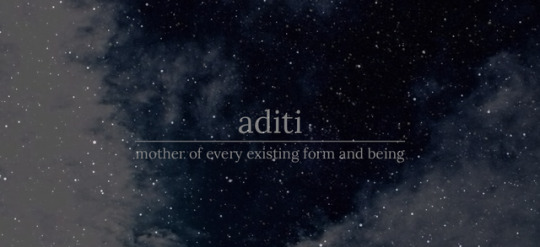
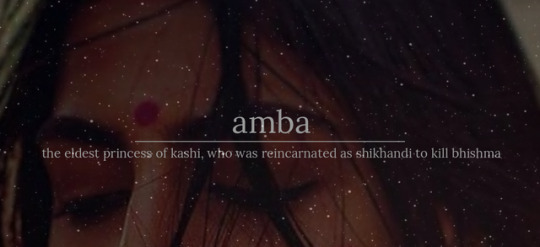





hinduism + ladies –> a - anj
insp
460 notes
·
View notes
Text
Malayalam Lesson 8 - Dative Case
Previous Lesson
Dative cases in general varies from language to language. So for simplicity think of the dative cases in Malayalam as the english equivalent of “for” and sometimes “to”, it’s almost like a particle that attaches to nouns and pronouns. It also functions as marking the indirect object.
The particle for/to in malayalam is ക്ക് or ന് depending upon endings but 99% of the time it’s the first one, a good way to think about this is what flows better, if you feel like your tongue twists while using one of them then it’s the wrong one. Try it using the other particle for എനിക്ക് and ഇവന് you’ll see what we are talking about
Pronouns
എനിക്ക് for/to me
നിനക്ക് for/to you
നമ്മൾക്ക് for/to us (inclusive)
ഞങ്ങൾക്ക് for/to us (exclusive)
Proximal
ഇവൾക്ക് for/to her
ഇവന് for/to him
ഇവർക്ക് for/to them
Distal
അവൾക്ക് for/to her
അവന് for/to him
അവർക്ക് for/to them
Like all the cases you can do this with any nouns including your names.
Examples
Is this for me?
ഇത് എനിക്ക് അന്നോ?
She knows how to swim
അവൾക്ക് നീന്താൻ അറിയാം
They send a letter to him
അവർ അവനു ഒരു കത്ത് അയക്കും
Can we do this?
ഇത് നമ്മൾക്ക് ചെയ്യാമോ?
Next Lesson
#malayalam#resources#i think next week i'll be all caught up??#so then i'll actually do the exercises when i reblog the posts
12 notes
·
View notes
Text
ഓണാശംസകൾ!

This Monday is ഓണം so let’s prepare for this amazing celebration. ഓണം onam is Kerala’s equivalent of New Year celebration. There is a misconception among non-Malayalees that ഓണം is only celebrated by Hindus. Although the origin of ഓണം is of Hindu religion and beliefs, it’s loved and celebrated by every Malayalee, regardless of religion on this planet. Schools give out a week long break even adults get few days off, everyone goes shopping for new clothes, we have a dress code :)
Google will give you a more detailed story, so the short version of the myth behind ഓണം is മാവേലി Maveli, a just and kind king, was asked by a disguised Vishnu (a poor brahmin) if he could have three feet/steps of land and the king agreed. Since this was a test for Maveli, Vishnu grew so large that with the first step he covered the entire earth and the second the skies. Now he doesn’t have place for the third step and he tells Maveli this and in response Maveli said he can place the third step on his head and Vishnu does, sending Maveli to nether world/underground. Having passed the test and he gets a wish but the king only had one request, to visit his kingdom, Kerala, once a year. Vishnu moved by all this granted it. So on the day of തിരുവോണം, the final day of onam season, Maveli visits Kerala.
We’ll cover the Malayalam months first, which is based on the കൊല്ലവർഷം (Kollam Year.) Right now the year is 1193! On a day to day basis we do follow the gregorian calendar but for things like festivals, farming, and birth charts etc we use the Malayalam months because കൊല്ലവർഷം is solar calendar and the months are named and based on constellation position (there is lot more science involved but we don’t know all of it).
Based on Gregorian Calendar the year starts in August-September time frame. So the months are:
ചിങ്ങം Chingam
കന്നി Kanni
തുലാം Thulam
വൃശ്ചികം Vrishchikam
ധനു Dhanu
മകരം Makaram
കുംഭം Kumbham
മീനം Meenam
മേടം Medam
ഇടവം Edavam
മിഥുനം Midhunam
കര്ക്കടകം Karkkadakam
And so Onam is celebrated in ചിങ്ങം! It’s a season, 10 days long, on the 10th day is തിരുവോണം, the actual day malayalees go all out and celebrate it! This year it’s from the 25th of August to the 4th of September.
Now let’s truly prepare for the festivities so you can wish people and more importantly ask for more food!
ഓണാശംസകൾ! Onnashamsakal (lit trans: onam greetings) Make sure to greet everyone on Monday!
പൂക്കളം pookkalam = A flower arrangement done with different kinds of petals in a colourful design
പുലികളി pulikali = tiger dance
വള്ളംകളി vallamkali = a traditional boat race that looks AMAZING when you see it happening irl
ഓണാ സാധ്യ ona sadhya = a meal with variety of traditional dishes( **vegetables only for onam!**) are served on a banana leaf, this meal is during lunch only
Next are types of dishes you can make with almost any vegetables, or even fruits!
തോരൻ thoran = coconut shavings based veggies, for example: beans thoran
പുലിശയറി or മോര് pulisseri or morru= yogurt curry
അവിയൽ avial = vegetable potluck
എരിശേരി erisseri = spicy coconut paste base with one or multiple veggies
പരിപ്പ് കറി parippu curry = lentil curry (what westerners drink as soup)
സാംബാർ sambar = the essential curry to all South Indians, spicy red color vegetable mix, soup consistency
മെഴുകുവാര്ടി mayukkuvarti = kerala equivalent of stir fry
അച്ചാർ aCHar = pickle (you can turn any food item into achar, even meat but this onam so only veggies)
Dont forget the പപ്പടം! Pappadam = a thin crispy kind of food so your sadhya is more crunchy
പായസം paayasam = the milk based dessert that ties everything together in the end

This is like extra fancy having that many sides, but we hope everyone gets to eat this many sides cause it is heavenly~ And bless you all with at least two types of payasam :D
Eat with your hands like a proper Indian, and fold the leaf top to bottom to show that you’ve enjoyed the meal and you’ll come again! (If you fold it from the bottom, it’s disrespectful!)
Happy Onam!
202 notes
·
View notes
